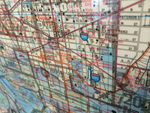Many satellite resorts, such as Igls, are good for day trips from Innsbruck. Below we've offered highlights of those attractions on the outskirts of the city.
Hungerburg
The Hungerburg mountain plateau (872m/2,861 ft.) is the most beautiful spot in Tyrol, affording the best view of Innsbruck, especially on summer nights when much of the city, including fountains and historic buildings, is brightly lit. Some of the most scenic hotels in the Innsbruck area are here.
You can drive to the plateau or take a cable car.
Schloss Ambras
This Renaissance palace, 3km (2 miles) southeast of the heart of Innsbruck on the edge of the Mittelgebirgsterrace, was built by Archduke Ferdinand II of Austria, Count of Tyrol, in the 16th century. It's divided into a lower and an upper castle set in the remains of a medieval fortress. This was Ferdinand's favorite residence and the center of his court's cultural life. The lower castle was planned and constructed by the archduke as a museum for his various collections, including arms and armor, art, and books, all of which can be seen today. The Spanish Hall, one of the first German Renaissance halls, was built to house the portraits of the counts of Tyrol.
The upper castle has a small but fine collection of medieval sculpture, black-and-white frescoes on the wall of the inner courtyard, and a portrait gallery hung with dynastic paintings from the 14th to the 18th centuries. In some of the living rooms, you can see 16th-century frescoes, late-16th-century wooden ceilings, and 17th-century furniture.
After viewing the interior, walk through the castle grounds. April through October, Schloss Ambras, Schloss Strasse 20 (tel. 0152/5244802; www.khm.at), is open daily 10am to 5pm (Dec-Mar daily 2-5pm). It's closed in November. Admission is 10€ for adults. There are no guided tours. To reach the palace, you can take tram no. 3 or 6 from Innsbruck's Hauptbahnhof. The castle also maintains its own shuttle bus, a white-sided vehicle with the words SCHLOSS AMBRAS written on its sides, which departs from a point adjacent to the Landhaus on the Maria-Theresien-Strasse every 30 minutes in summer, every hour in winter, during the palace's open hours. Service runs less frequently December through April.
The Wiltener Basilica
In the southern district of Innsbruck, where the Sill River emerges from a gorge, Wilten is one of the most dramatic landscapes around the city. This ancient spot was once the Roman town of Veldidena.
Wilten's parish church, the Wiltener Basilica, Haymongasse 6 (tel. 0512/583385), is one of the most splendid houses of worship in the Tyrolean country. Built between 1751 and 1755 in a rich rococo style with twin towers, the church did not become a basilica until 1957. Wiltener Basilica is noted for its stuccowork by Franz Xaver Feichtmayr. The ceiling frescoes are by Matthäus Günther. A sandstone figure depicting Our Lady under the Four Columns has been the subject of pilgrimage since the Middle Ages. Both the church and the basilica are open daily from 9am to dusk.
Across from the basilica is a cluster of baroque buildings that belonged to an abbey founded here in 1138. The abbey church, the Stift Wilten, Klosterg 7 (tel. 0512/5830480), merits a visit. Dating from the 1650s, the church has two stone giants guarding the porch and a grille from 1707 in the narthex (entranceway). This church was damaged by World War II bombings. To reach the site, take tram no. 1 to Stubaitalbahnhof/Bergisel.
Bergisel
If you're driving, head out the Brenner road to Bergisel (747m/2,451 ft.), a lovely wooded section just outside Innsbruck that's ideal for leisurely strolls in warmer weather. It lies near the gorge of the Sill River on the southern outskirts of Innsbruck, about a 20-minute walk from the Wiltener Basilica. Here you'll see the ski jumps built for the 1964 and 1976 Olympic Winter Games, and there's a great panoramic view from the top of the jumps.
The hill is a historic site, scene of the 1809 battles in which Andreas Hofer led some Tyrolean peasants against French and Bavarian forces (he was later shot to death on orders of Napoleon). Below the ski jump is the Andreas Hofer monument erected in 1893 to commemorate the battle. Tyroleans speak of this as their "field of remembrance," and it's filled with memorials and visitors. Heroic though the local deeds might be, they might not interest North Americans. Visit this place simply for the views and the relaxing walks.
Note: This information was accurate when it was published, but can change without notice. Please be sure to confirm all rates and details directly with the companies in question before planning your trip.








